Uxmal - City of Great Architects and Stonemasons
![]()
"Its form is not pyramidal but oblong and rounding. On the east side of the structure is a broad range of stone steps...so steep that great care is necessary in ascending and descending."
These words, written by John L. Stephens in the book, Incidents of Travel in Central America, Chiapas and Yucatan, back in 1841, describe clearly our first view of the Pyramid of the Magician at Uxmal, our next visit to Mayaland. We did not experience the need for great care ascending the steps as climbing it is no longer permitted, but viewing the towering structure, 32 meters high and dominating Uxmal, was quite sufficient.
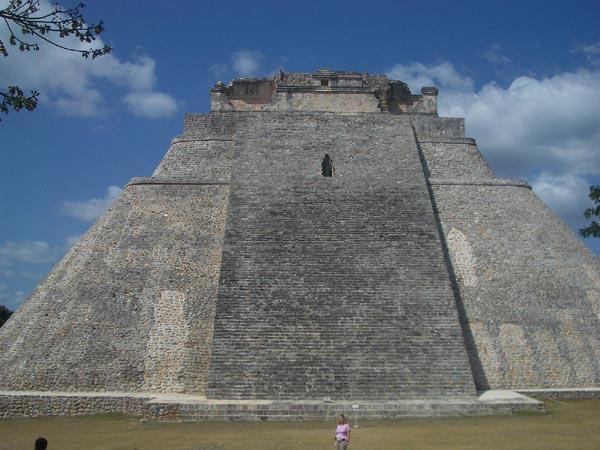
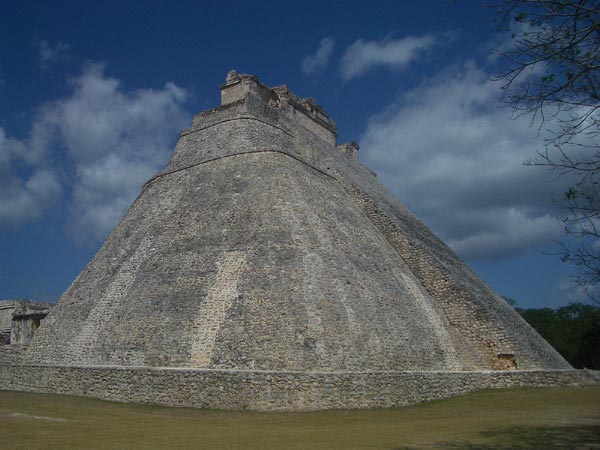
From the pyramid, we walked under shady trees, past iguanas sprawling comfortably on piles of cut rocks, through a small ball court.
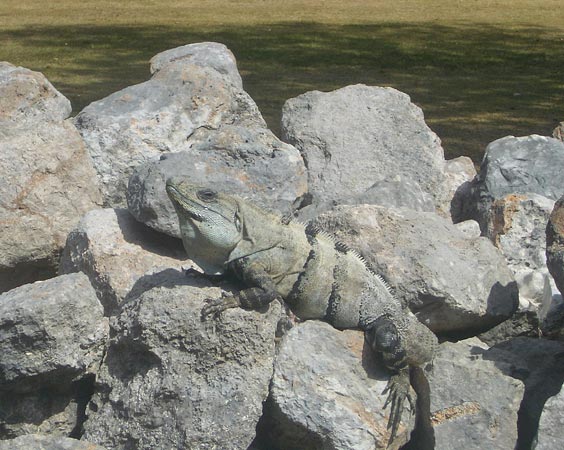
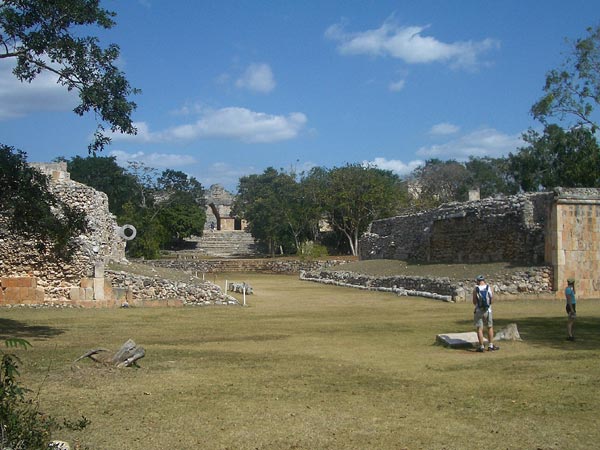
Ahead was the Casa del Gobernador, a long building on a stepped platform. We realized that the whole facade had three sections separated by two large triangular arches, now blocked. The building was embellished with shaped stones arranged into complex and exquisite patterns across the top. In the center was an especially intriguing frieze, an image of a majestic figure, an important man or god, wearing an elaborate headdress. He is surrounded by serpents heads.
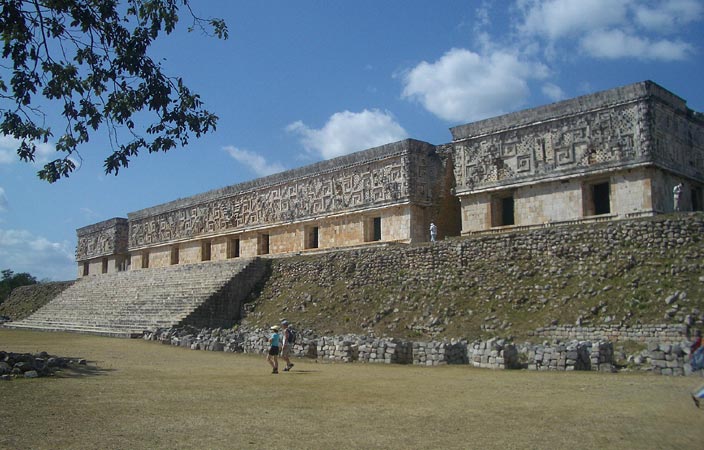
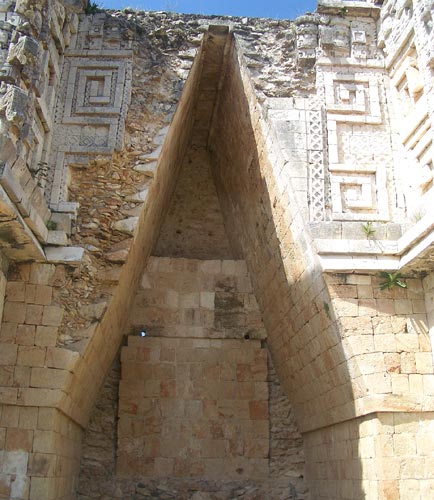
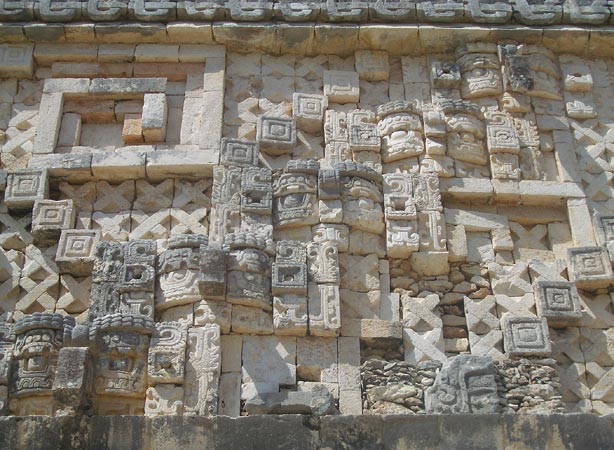
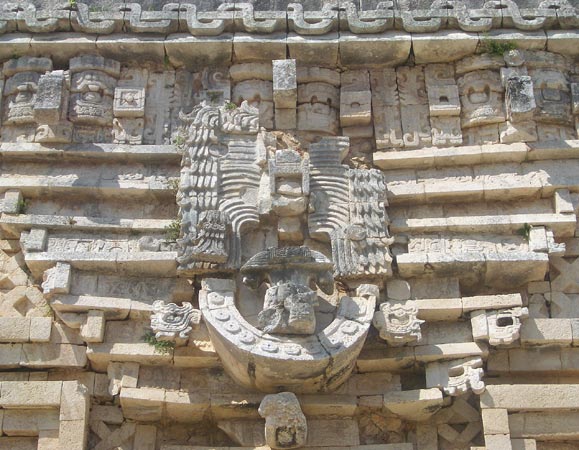
Climbing these stairs, we stood gazing back at the Magician's Pyramid and the two quadrangles of buildings behind it. We also had gained a panoramic view of the green pygmy forest spreading over the gently rolling hills of central Yucatan.
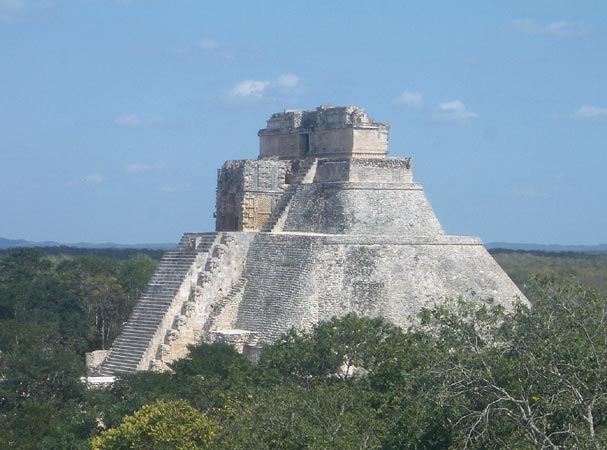
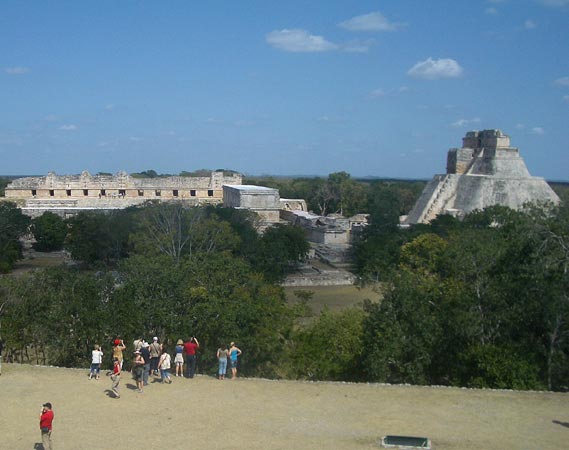
Adjacent to this imposing structure was the Casa del Tortugas, a small building decorated with many turtles on the cornice
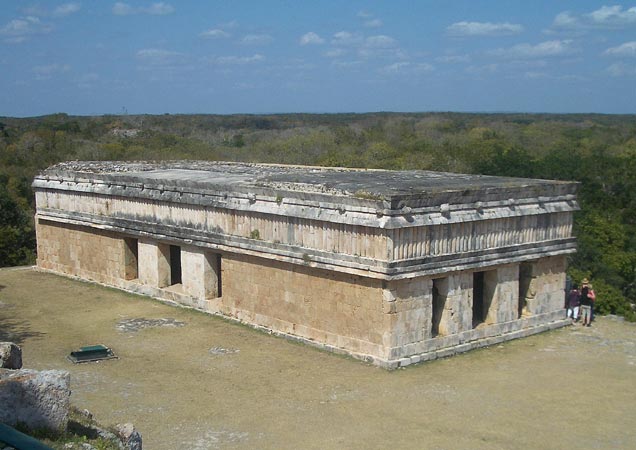
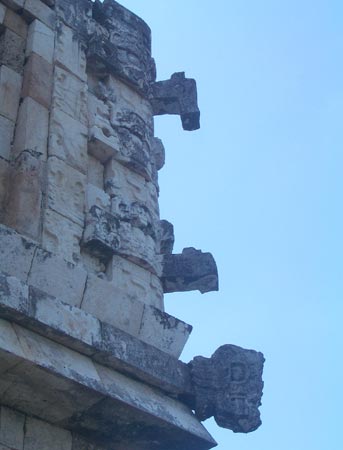
At the opposite end was the Great Pyramid. This was under restoration and off limits to visitors so we followed a path past it to the Dovecote Group, a complex of buildings, the main one a long building crowned by a roof-comb of unique and elegant design.
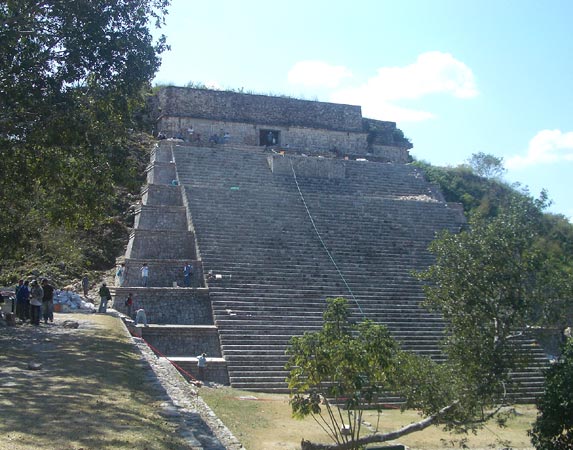
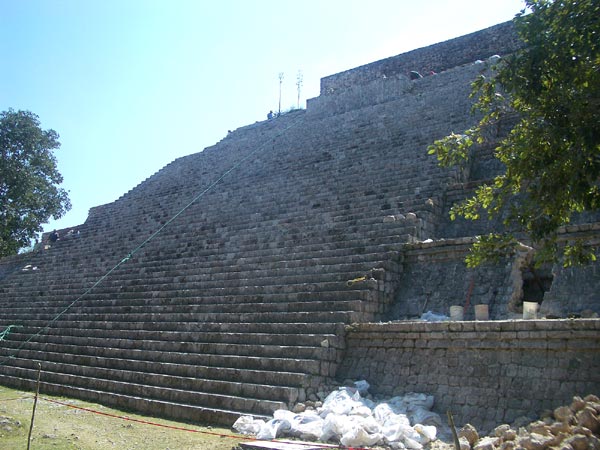
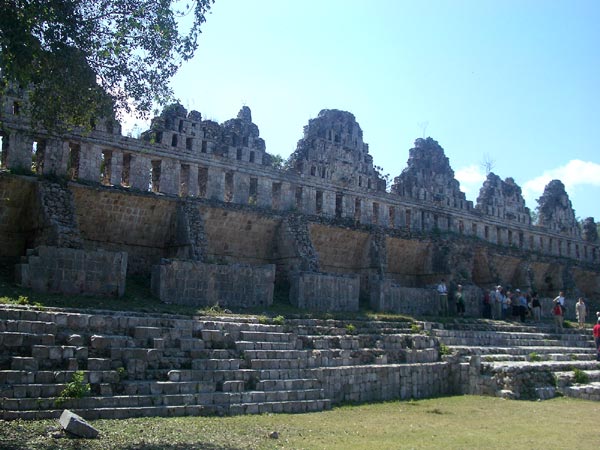
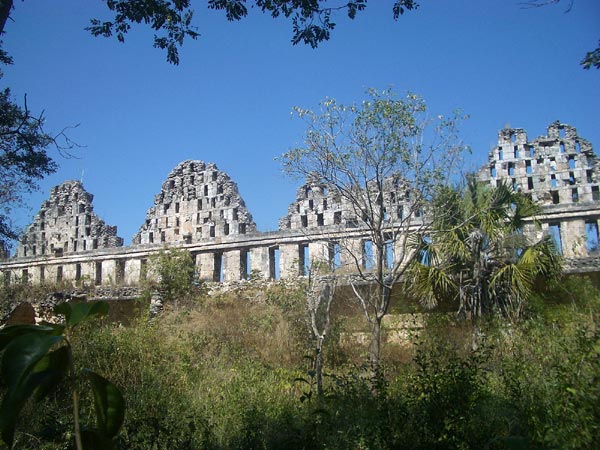
Returning to the quadrangles behind the Pyramid of the Magician, we entered the first plaza for a clear view of the entrance to the temple at its topmost level. This portal was decorated with masks of Chaac, the god of rain, latticework panels and stone mosaics. The whole creates an image of a god with great rectangular eyes, the remains of a nose and the open mouth, the entrance, with bared teeth. It was easy to imagine that this visage would commend respect!
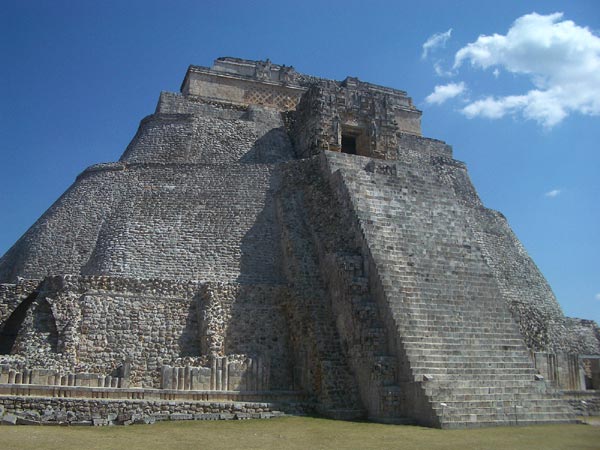
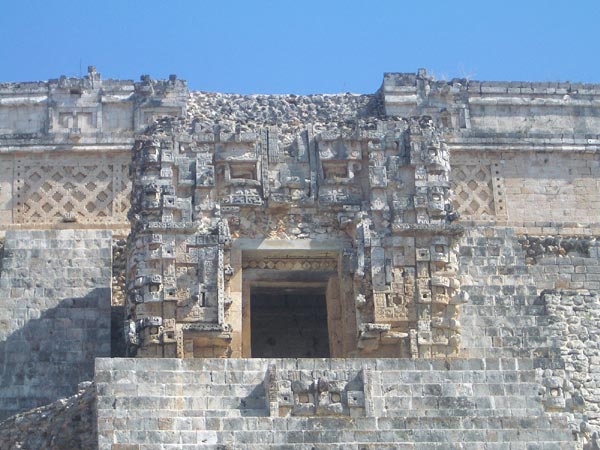
Behind us, the walls of the buildings of the quadrangle were decorated with bird motifs - parrots, macaws, and eagles - extending from rows of horizontal ridges. This complex offered a sheltered place from which to view ceremonies occurring up in the pyramid's temple.
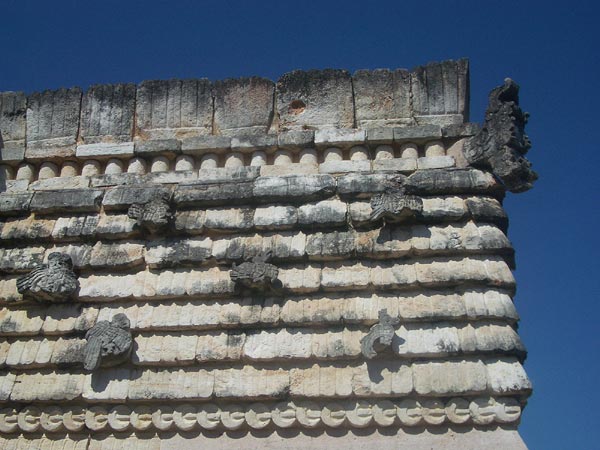
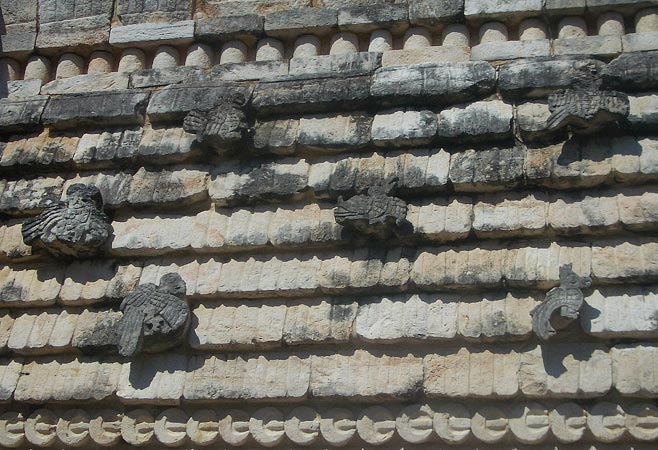
A passage led us into the adjacent Nun's Quadrangle, a much larger space surrounded on four sides by long buildings with truly elegant facades. Built in the era of Uxmal's greatest splendor, this quadrangle offered us an extravagant display of the art of stonemasonry. It took many minutes of careful observation to grasp the complexity of the designs. The structures of these buildings illustrated the high level of architectural skill of the builders as well.
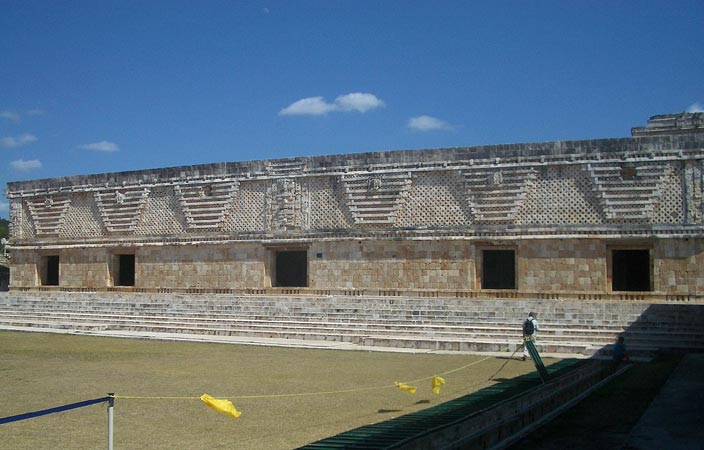
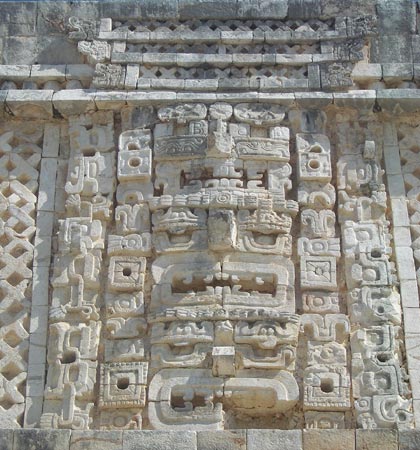
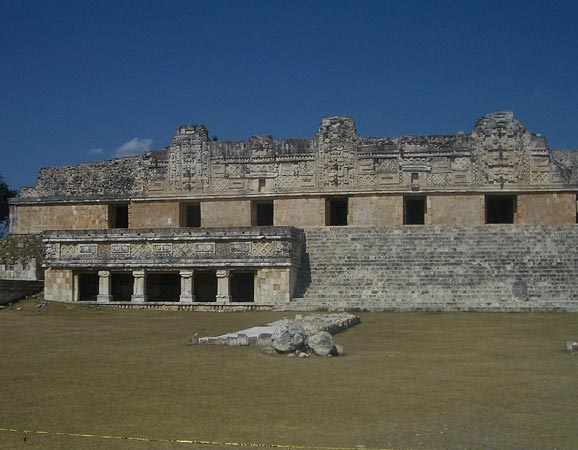
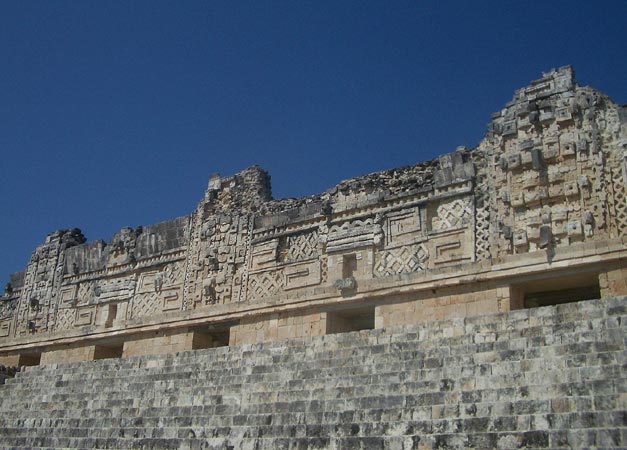
Who were these amazing architects, stonemasons and artists? They were members of the Puuc Region of the Mayan kingdoms who first settled in this land as early as 500 BC. As this area had no source of surface water, they learned to build cisterns for storage of rainwater allowing them to thrive and advance, culminating in the creation of this pleasing and artistic city between 7th and 10th centuries.
Perhaps 25,000 inhabitants lived in the surrounding region. They enjoyed a cooperative relationship with the other city-states until 1185 when this alliance broke apart resulting in wars and unrest. They left an artistic legacy that still impressed and enchanted us, so many years later.
Click here to return to Our Moving on to Mexico - Winter 2008-2009 page
![]()